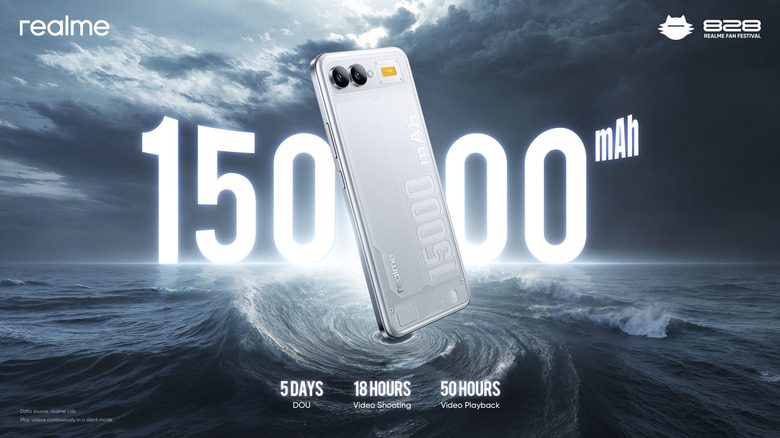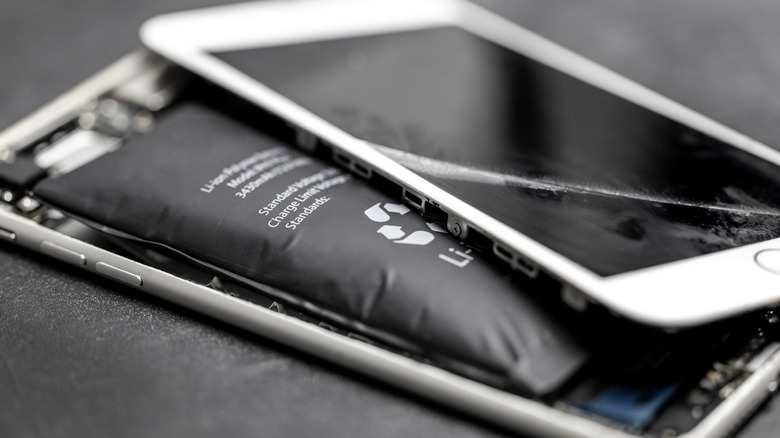This Concept Phone's Battery Lasts Almost A Week, But You Can't Actually Buy It
Chinese phone manufacturer Realme has revealed a new phone that blows away the competition with a massive 15,000mAh battery. The company estimates that the phone's battery can last up to five days on a single charge and three months of standby in airplane mode, making it one of the most exciting upgrades we've seen on a smartphone in years. But there's one very important caveat: You can't buy the phone.
The main reason that you can't pick up a Realme 15000mAh is because it's just a proof of concept. Realme has no plans to actually mass produce this device, but there's also the fact that the only way that Realme was able to create a battery this powerful in such a thin form factor — the device is only 8.99mm (roughly 0.35 inches) thick — is by using a 100% silicon anode battery. For a little extra context, the thickness of the concept phone is only a little thicker than the Galaxy S25 Ultra, which sports a 5,000mAh battery.
If Realme actually did plan to put this phone on store shelves anytime soon, we'd be worried. Silicon-carbon batteries are exciting, but they come with their own set of safety concerns, and 100% silicon batteries are even riskier.
The risks of silicon-carbon batteries
One of the reasons we haven't seen more adoption from companies with the ongoing advances that silicon-carbon batteries offer — even the Galaxy S26 Ultra doesn't look to be taking advantage of the new technology — is not only because of regulations that limit how big battery cells can be, but also because of how quickly silicon batteries expand. No battery lasts forever, but research has shown that silicon batteries degrade significantly faster than lithium-ion batteries.
As such, Realme's 15,000mAh battery is exciting, but it's also a long way from being scalable to the mass production that would be needed to bring the phone to market. It's still an incredibly interesting concept that could push smartphone manufacturers to find new ways to improve battery capacity in the years to come.
In fact, it's already happening with the aforementioned silicon-carbon battery designs featured in some smartphones like the OnePlus 13, but until it becomes more mainstream, we'll have to rely on the lower capacity of standard lithium-ion battery designs. It's disappointing, but this concept at least shows that phone manufacturers are looking for ways to improve battery life without compromising on design in favor of a massive batteries that result in big, bulky smartphones.

